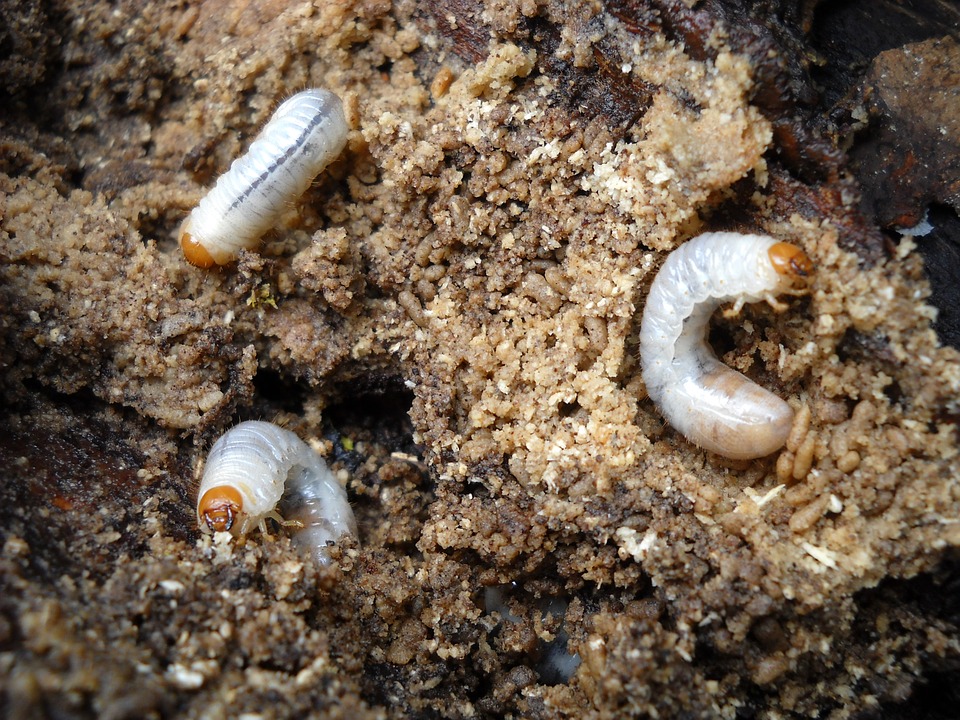Signs of Grubs in Your Lawn
Summer months are the optimal time of the year for lawn grubs to take full control of your lawn. Grubs, the young forms of various types of beetles, feed on grass roots from underneath the soil, causing the lawn above to wither and die. It’s a repairable problem, but in order for you to find the best lawn care options and prevent further damage, you need to know what to look for in the first place. Here are some of the biggest signs that grubs are wreaking havoc in your yard.
Look For Lawn Damage
- Brown/Dry Grass: Though grass can dry out from extremely hot, dry weather and lawn diseases if you start to notice abnormal brown patches in your lawn it could be a sign of a growing grub problem. This is an especially noticeable piece of evidence in the springtime as the surrounding grass turns green while the dead patches never do. You can test these fragile looking patches by pulling at the grass blades to see if they easily roll up off the soil. This occurrence is called “carpet grass”, because there are no roots left to hold the turf down and as you pull it, it will begin to roll up like a carpet.
- Spongy Texture: When grubs overfeed on grassroots they leave the sod less and less secure, and as it begins to die you’ll notice areas feeling spongy as you walk across them. Like dried grass, you can easily lift these sections away from the ground as a result of grubs eating away at the roots.
Unwelcome Wildlife and Pests
Not only do grubs cause damage to your lawn, but they can also attract a host of other pests and wildlife into your yard. The sudden presence of wildlife such as birds, skunks, deer, and raccoons could mean that they’ve come to dig around in your yard and feed on the present grubs. Confirm that they’re looking for grubs specifically, though, before you start any treatments, as earthworms could also be their intended prey. An increase in activity from pests, on the other hand, such as beetles and moths might be an early sign of grub infestation if they target your lawn to lay their eggs in.
Inspect the Soil
Of course, actually finding grubs in your yard is a pretty strong indicator of an infestation. Seeing just a few of them is perfectly normal (your grass should be healthy enough to withstand a smaller number of them feeding on the roots) but if you start to have frequent sightings, there’s always a chance more could be hiding throughout your lawn. You can inspect any questionable areas of turf similar to how you would check for carpet grass; use a spade to cut sections that are roughly one square foot in diameter and a few inches deep in a handful of different areas across your yard. Pull back the sections so you can clearly see the soil beneath, and inspect for the small, white, worm-like bugs curled in C-shapes. In most cases, less than five or six grubs per section is an unconcerning amount, but much more than that could be a call for further action.
Saela provides both residential and commercial services including: Pests, Mosquitoes, Rodents, Fleas & Bed Bugs.
Click HERE to talk to an Saela expert today.
If you’d like to learn more about what Saela does, click HERE
